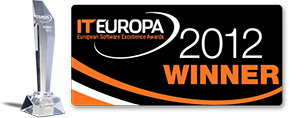ATIS Dynamic Spectrum Management (DSM) Technical Report (ATIS-0600007) offers different methods to optimize physical layer of DSL systems.
DSL spectrum management as O&M tool is able to provide the following benefits for DSL providers:
- to help the more stable daily operation of the existing DSL lines
- to increase the DSL coverage (to extend the loop length)
- reduction of power consumption by telecommunication equipment
The chief technical obstacle to the cost-effective delivery of high-speed services are interference and physical faults in the cooper plant. Physical faults can arise at any point in the plant, due to technician or subscriber activities, construction activities, and even environmental factors such as wind and rain. Interference is created by a variety of sources: appliances in the home, other services in the access network such as T1 and E1 services, and AM radio signals. In dense deployments of DSL, or in deployments with a mix of DSLAMs deployed in Central Offices and at remote locations (e.g., FTTN), crosstalk among DSL lines in a cable can be a significant impairment.
Unaddressed, these impairments limit DSL speeds and loop lengths, reducing an operator’s competitiveness. They also result in high rates of customer complaints, which often lead to churn, and expensive technician dispatches. DSMS directly reduces trouble rates in DSL networks and increase the speed, coverage, and quality of DSL services.
DSMS combine standardized DSL technology with proprietary methods and highly efficient data collection strategies to automatically stabilize the vast majority of instable lines in DSL networks. Using DSMS DSL service providers are able to automate the management and maintenance of their DSL access networks, fundamentally improving performance and return-on-investment of DSL networks.
DSMS was implemented over our Eventus platform as a new functional module. During the system planning Broadband Forum TR-198 was also taken into consideration:
DSMS functions:
- bulk DSL line measurement
- scheduled measurements
- storage of measurement results
- evaluation of measurement results
- DSL line profile change
- Network Trouble Ticket creation
- DSL Pre-qualification
- supporting multiple DSL equipment
- Northbound interface for OSS integration



